26 December 2012


25 December 2012
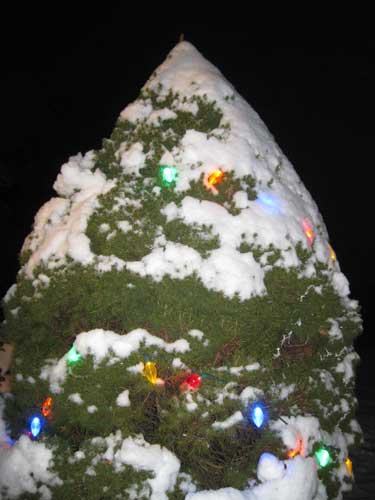
24 December 2012

23 December 2012
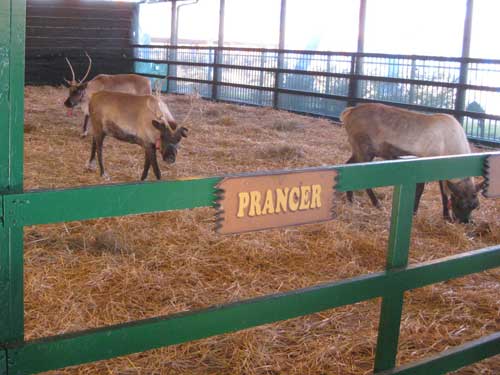
22 December 2012
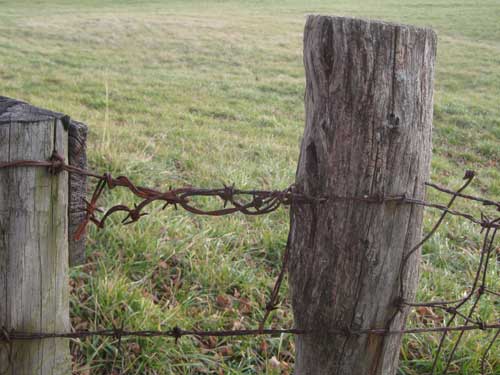
20 December 2012

26 December 2012


25 December 2012

24 December 2012

23 December 2012

22 December 2012

20 December 2012
Whenever I travel I visit cemeteries. I am not morbid or do I have a fascination with death. I like stones that look like they are from the earth, have a good bit of lichen growth, and are sculptural.
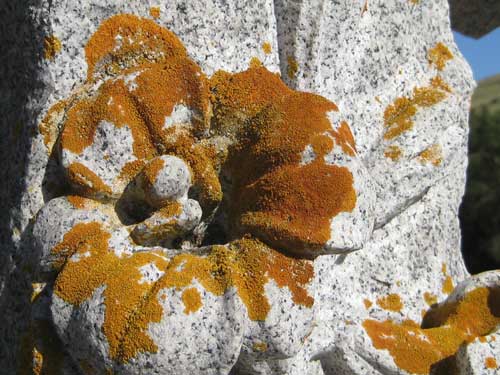
Lichen Growth on Headstone in San Luis Obispo, CA
Yesterday I took some photos of a cemetery that is within walking distance from where I am staying.
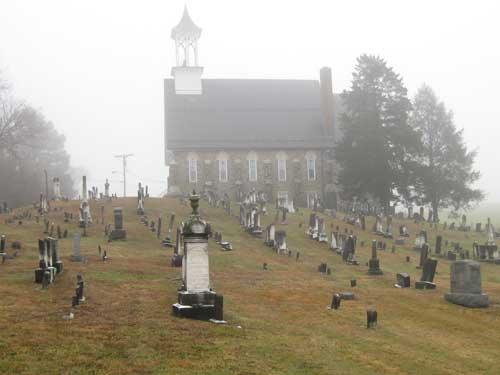
Cemetery in Sparks, MD
Lovely misty and overcast morning with a flock of crows across the road from the cemetery. Or is that a murder of crows? Hitchcock came to mind.

I tend to experience the stones like I do sculpture. I want the whole to be addressed and to see the hand of the person who carved the stone. And I am fond of the use of nature–trees, flowers, animals. The best is when the stone is carved to tell the story of the individual.

It is interesting to see the same or similar imagery in cemeteries around the country. What does the imagery mean? There are numerous sites that contain lists of symbols.
Last night I was thinking about how to age and hang a piece, so I did a google search for combinations of encaustic, wool, cotton, twine, rope, encased in plaster, and hit the Penn Artifact Lab. It is a working conservation space that can be viewed by visitors with a blog component. How cool is that?
While I was in Maryland, I spent part of a day at the Smithsonian Natural History Museum. The museum has the FossiLab where you can watch folks working. The access to part of the process of conservation adds another aspect to the exhibitions.
Back to my search. I found this description–
“After prying some of the loose plaster away, I found that luckily, the plaster seen around the outside of the painting is only a thin skim coat layer, and that paper was used as a barrier layer in places between the painting and the plaster.”

I looked around a bit and found so many interesting and amazing images of artifacts. Ran across this bit on a coffin and cedar–
“Cedar is a prized wood because the trees produce chemicals that make them resistant to insect damage and various forms of rot.
I documented the appearance of the board, noting its construction details, such as four wooden pegs and mitered edges. One curious feature was thin metal ribbons running in channels along the long axis of the board.”

Cedar is one of my favorite materials. It is soft, easy to carve, can be yellow or pink in color, stains nicely for my purposes, and it has a great fragrance. I originally started using it when I was making Tools for Rent a series of bronze daggers.

I was in the hardware store looking for some wood to build boxes when I was hit with the memory of opening my mother’s cedar chest. Got to thinking about the arbitrary value of an individual based on the contents of a box and how that compares to the arbitrary value placed on art. And I really like the fragrance.
Back to my search. I found this image of a bone awl. It is so clean, lovely, and elegant.
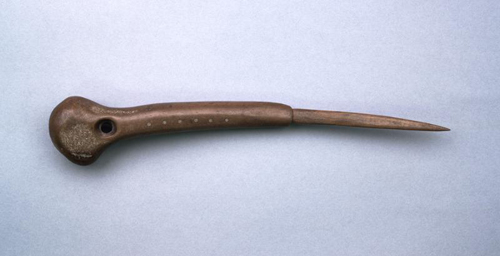
Folks listed on the Artifact Lab blog–
Project Conservator Molly Gleeson
Senior Conservator Lynn Grant
Conservators Julia Lawson and Nina Owczarek
Penn Museum’s Egyptian Section curators
Curator Dr. David Silverman
Associate Curators Dr. Josef Wegner and Dr. Jennifer Wegner
The Artifact Lab and the Penn Museum blogs have great detailed information. I just subscribed to both.
My Dad died.
It wasn’t unexpected, yet you never know how you will feel until something is reality.
The night before I flew home for his graveside service I made a memorial bracelet.
I cut a small piece of bamboo, drilled holes in it with my Dad’s old Black and Decker drill, then made some knots.
The pattern of knots on one side represents his date of birth, the other side the date of his death. Years back I read that bamboo has a cultural myth–mourning the death of a father.
Seemed appropriate, understated, personal.
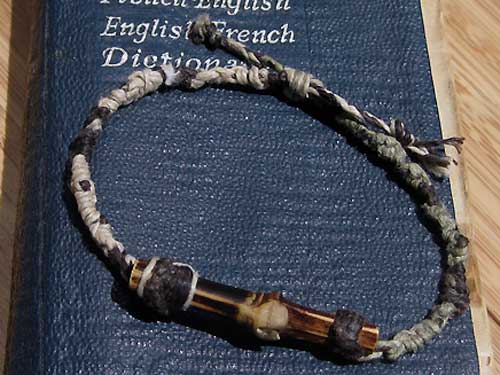
The morning of his service I took cuttings from his garden to make a spray for his coffin.
At the service I didn’t feel as much of a loss as I did when I spent time in his shop knowing he would never be back.
When I went through his file cabinet I found the English-French Dictionary he used when he was stationed in France during the Korean War. A newspaper clipping was tucked inside. I believe that my need to keep mementos just might have came from my Dad.

I also found letters I had written to him. He even kept the packet of photos describing an investment casting.

Dad wasn’t one to say how much he cared, his actions showed it.
One of my works in progress is two pieces of 1/2″ hardware cloth, in code the embroidered phrase, “My Past Reflected Back,” and the embroidered companion word, “haunted.” The pieces will be bound together. There will be 45 pieces of mirror bound onto the embroidered pieces. Additionally, some type of plant material will be used to function as a frame and to integrate the two embroidered pieces.
A component of my past work was cultural myths and superstitions. When I was making my Avian Headboxes I read, Cultural Aspects of Trees: Traditions and Myths written by Kim D. Coder. I reread the article today and am leaning toward using Birch, which has a reference to wisdom. The idea of wisdom would be a good option for learning from the past, but not allowing it to control you.
I decided to google “birch cultural myths” to see what else has been written. Here is some of what I found at Trees for Life–
“…in early Celtic mythology, the birch came to symbolise renewal and purification.”
“Bundles of birch twigs were used to drive out the spirits of the old year.”
I like the idea of renewal in reference to the past. Again to not allow your past to have power and control over your current and future self.
These sites are consistent in stating that birch is used to prevent evil spirits from entering and also used to drive evil spirits out.
Birch Trees: Myths and Superstitions
This could be reference to forgiving yourself and to letting go of negativity.
So, I am leaning toward Birch, but have not yet ruled out Apple. I like the reference to knowledge with Apple.
One gains knowledge from the past.
The red color of the bark of both Birch and Apple would be a nice addition with the grey and cream wool used for the embroidery.
Since a component of my work is the illusion of artifact, past life; I will need to find a way to age the piece when completed. Wool is great in many ways, but I cannot wax it or torch it like I do with other fibers. Salt has been an interesting material to use, but I have found that a salted surface can change over time. I have been considering using plaster and concrete.
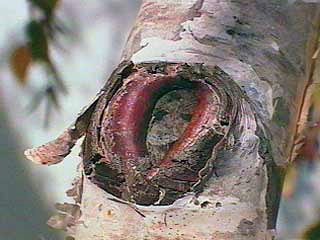
I briefly mentioned wishing trees in the But is it art? post.
Additional information on sources–
Kim D. Coder, Ph.D.
Professor
Community Forestry and Tree Health
University of Georgia
Warnell School of Forestry & Natural Resources
Trees for Life is the only organisation specifically dedicated to restoring the Caledonian Forest to a target area of 1000 sq miles in the Scottish Highlands.
Additional Reads
Tree of the knowledge of good and evil
South Carolina Highlights–Motoi Yamamoto
I visited the Halsey Institute of Contemporary Art to take in the installation Return to the Sea: Saltworks by Motoi Yamamoto.
I was excited to see how Yamamoto used salt in an installation format. The simplicity of the process–a squeeze bottle, a brush, and an idea–wowed me and the work was beautiful.

When I view work I typically do not like to read or hear much about it. I want to experience the work on my own. Well, can I ever really be on my own considering that all of the stuff that I have seen and experienced comes along with me.
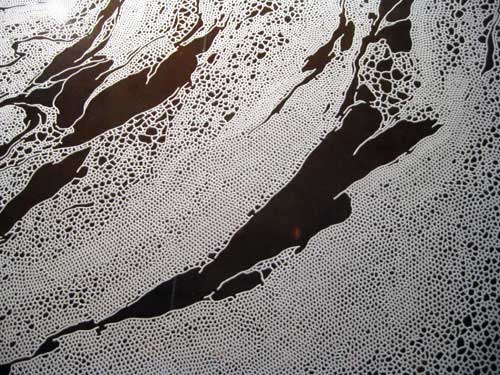
When I first saw the work I felt an overwhelming calm. Living on the California Central Coast I first thought there was reference to the patterns left on the sand by the tide. I heard a few folks talking about hurricanes and storms. I didn’t see that. The work was too elegant and repetitive for me to think storm and violence.
What was I missing? After I viewed the work from the floor and platform, I watched the two videos connected with the artist and his work. The hurricane reference was there in the form of the satellite images of storms. The exhibition also had several of Yamamoto’s prints that made the storm reference clear.
What does Return to the Sea mean? Actually just that. At the end of the exhibition the folks are invited to help dismantle the piece. The idea is that they will take a bit of the sculpture with them and literally return the salt to the sea. The ritual nature of the process is evocative.
I have used salt in my work for a variety of reasons–reference to preservation, currency, good luck, and as a surface effect to grow crystals on works, and patination. While I was at the exhibition I found out that in Japan salt is used not only to attract good luck but to ward off evil. More reason to continue to use salt in my work with reference to evil.

This is a tree in the backyard of where I am staying in South Carolina. When I first saw the tree I thought the depth and regularity of the holes were made by a person. And if they were made by a person, does that make it art?
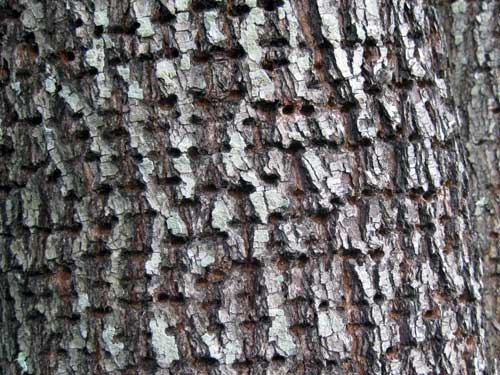
The holes were made by a woodpecker.
I think the surface is beautiful. It brought to mind images of coins inserted into the bark of wishing trees and the story of pigs teeth inserted in a tree in the film Howards End.
I often use dried plant parts in my work. Typically the plants must have some interesting tactile quality, be toxic, and have a cultural myth or superstition. I was looking through a stash of dried plant parts and found some Haworthia limifolia leaves. They have great texture with sharp and pointy tips.
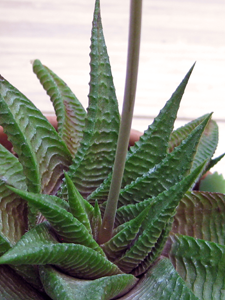
I googled Haworthia limifolia looking for information. I was a bit disappointed that the plant isn’t toxic. Apparently it is often used in place of Aloe for skin ailments. I did find a line that popped up in several articles, “Haworthia limifolia is often used by traditional healers as a spiritual remedy to ward off evil.” Curious. What kind of evil?
I have a contact at the UC Botanical Garden so I sent him an email inquiry about the plant. The plant is one that he gave to me several years back. He sent me a pdf of an article that I hadn’t read, Lightning Birds and Thunder Trees authored by Adrian Koopman. The article states that Haworthia is used as a charm to protect against lightning.
We don’t see much in the way of lightning where I live. Before reading about the plant’s reference to lightning, I had already bound the bits to a piece of hardware cloth to become part of a lid. My work must have the appearance of a life lived, so I age the work using one or more techniques–wax, heat, fire, salt, molten sugar, chemicals… and sometimes I bury the work.
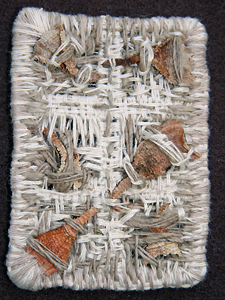
The Haworthia bits are bound to the hardware cloth with cotton and bamboo fiber which works great with all of the techniques.
A few lightning information links–
S.A. Weather and Disaster Information Service, South Africa
Global Hydrology and Climate Center
Mortality Statistics–Victim of lightning by country
NOAA National Severe Storms Laboratory
I am addicted to Netflix streaming. Recently I listened to Next Stop Wonderland a film I viewed several years ago. I remembered liking the film for the dialog and the Bossa Nova sound track.
The dialog has some interesting notions–
“contemplate something beautiful”
“…it’s important to have some daily ritual in your life that gives it a sense of consistency.”
Reading has always been an important part of my life. I like to start the day reading something to set my day. At the close of the day I enjoy reading something as well.
One of my favorite scenes in Next Stop Wonderland occurs in a bookshop. Erin, the central character, drops a book; it falls to the floor open and face down. She picks it up and is about to close it when the book seller says,
I love books–reading them, thinking about them, the way they feel in my hands, the way they smell. When I was young I was taught to respect books. The book should not appear to have been read. Then something happened. First I started dog-earing the top of the pages to mark text in the upper half and the bottom of the pages for text in the bottom half. Then a double fold made if the text I wanted to remember was on both sides of a page.
Now I use books somewhat like a sketchbook. The books that I like quite a lot have dog-eared pages, highlighting, and underlining. And then there is my obsessive note taking, jotting down ideas, and making sketches in the white space.
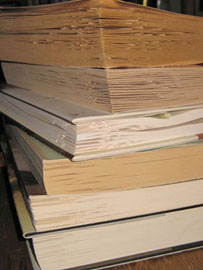
This is a small stack of books that I liked very much when I first read them and when I reread them. Actually I liked them so much, I gave them as gifts. The stack includes work by Joe Coomer, Percival Everett, Brian Morton, Abigail Thomas, Margaret Atwood, and Richard Preston.
When I was preparing the links I realized that nearly all of the books have descriptions of an artmaking process. The exception is Richard Preston’s The Demon in the Freezer.
I am in the process of proofing a database of words for a couple of projects for speech language pathologists. Today I ran across a couple of words that I wasn’t sure were in fact words.
The letter combinations seemed like perfectly acceptable spellings, but something seemed amiss. Turns out they are in fact words and a bit connected as well.
The words I questioned as being such are, stoup and roods. Stoup is a basin that contains holy water and a rood is a crucifix or a painting of such. Coincidence, serendipitous that both words are religious objects used in rituals?

Free to Choose is part of my Cleanse Your Palate series. Each glass is bound with wool, has a word in code, and is filled with clove soap. The holey rock rosaries are braided and knotted with “Forgive Yourself” in code.